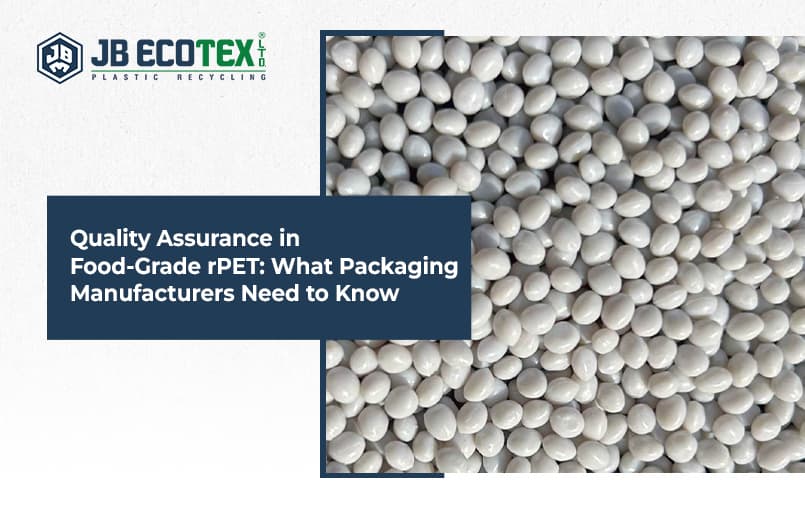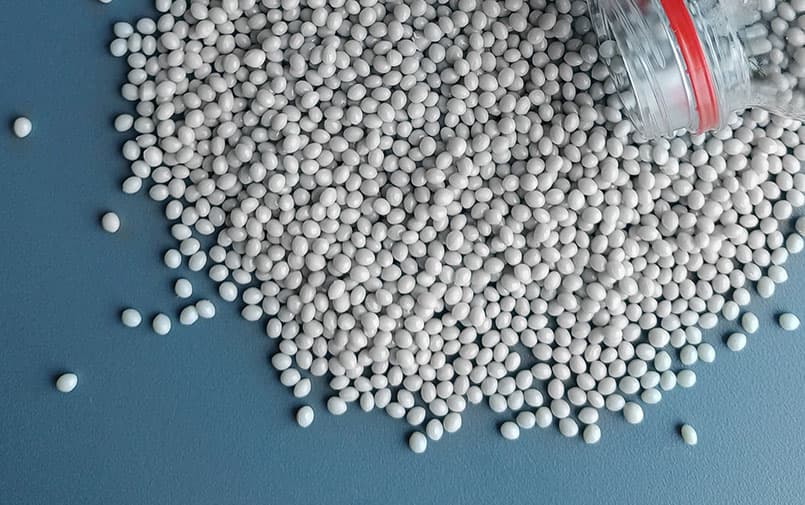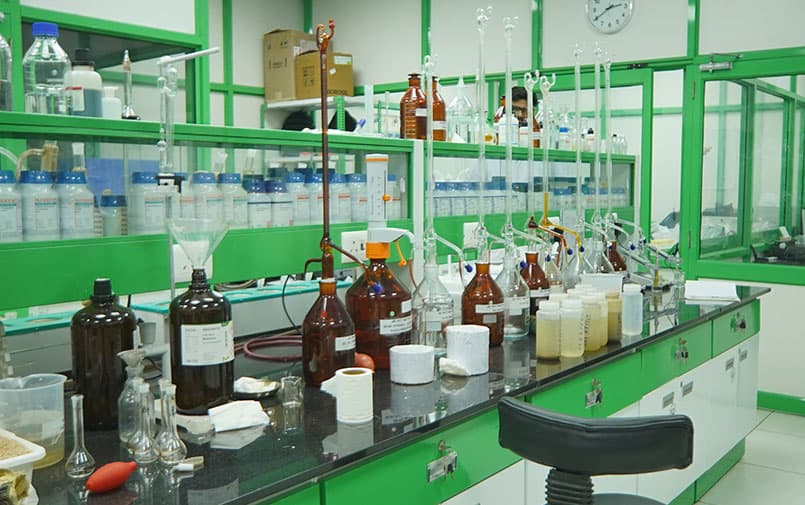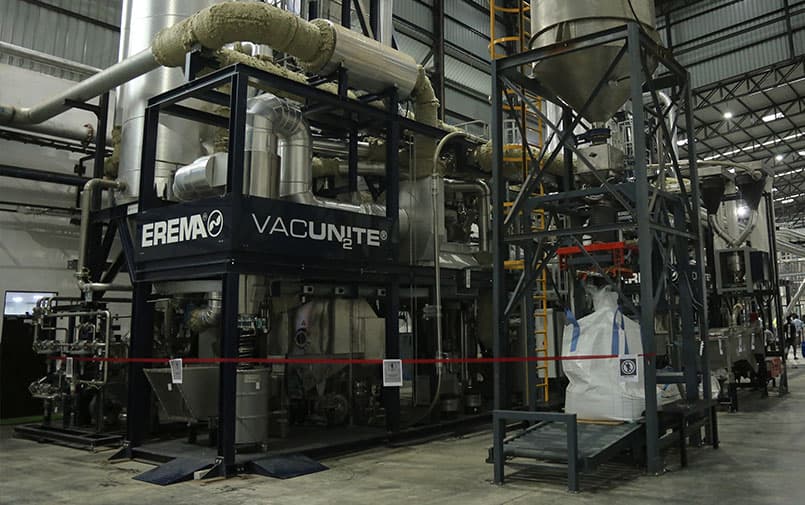Quality Assurance in Food-Grade rPET: What Packaging Manufacturers Need to Know

At first glance, a clear PET bottle might not tell you much. But to those of us in the food packaging industry, it represents a series of decisions, about safety, sourcing, compliance, and consumer trust.
And when that bottle is made from recycled material, the story only gets more layered.
Food-grade rPET quality assurance is no longer just a technical box to tick. It is the foundation for everything from regulatory approval to brand credibility. As more manufacturers make the switch to recycled PET, the pressure to ensure purity, consistency, and traceability has never been greater.
Let’s unpack what really matters when it comes to sourcing and producing food-grade rPET, and why the smallest details can make the biggest difference.
Understanding Food-Grade rPET
Food-grade rPET is recycled polyethylene terephthalate that has been processed to meet the strict standards required for packaging that comes in contact with food and beverages. This includes items like water bottles, containers for ready-to-eat foods, and rigid trays.
It sounds straightforward, but when you think about the number of hands and machines that touch the material, from post-consumer collection all the way to extrusion, the need for strong food-grade rPET quality assurance becomes self-evident.
When the final product is going to hold something people consume, there’s no room for shortcut

The Role of Quality Assurance in rPET Production
Every step in the recycled PET journey must be aligned with the goal of purity and performance. This starts with material selection and sorting, ensuring only high-quality post-consumer bottles enter the recycling stream.
From there, thorough cleaning and decontamination processes are essential. These are designed to remove potential contaminants and bring the resin back to food-contact-grade standards. This includes multi-stage washing, heat treatment, and often solid-state polymerization.
Consistency in resin production is the third pillar. Packaging manufacturers need rPET with predictable behavior, whether they’re molding bottles, forming sheets, or producing multilayer containers. That’s where batch consistency rPET comes into play.
If your resin behaves differently from one batch to the next, it throws off production lines, affects product integrity, and invites compliance risks.
Key Quality Assurance Processes
Batch Testing
Batch testing is exactly what it sounds like evaluating resin samples from every production lot. These tests monitor physical properties like intrinsic viscosity, melt flow index, and contaminant levels.
This ensures that rPET quality remains stable from batch to batch, especially important for packaging that must meet shelf-life requirements or survive hot-fill processes.
Traceability
In food packaging, traceability is non-negotiable. Every bag of resin must come with a data trail — from the original feedstock to its recycling process, and finally to the packaging floor.
Maintaining traceability helps both suppliers and manufacturers respond quickly if any food safety questions arise. It also strengthens food contact safety rPET compliance when dealing with audits or export requirements.

Certifications and Documentation
Most packaging manufacturers working with food-grade rPET will encounter documents like:
- Food contact compliance certificates (e.g., US FDA, EFSA)
- Global Recycled Standard (GRS) or similar third-party validations
- Material Safety Data Sheets (MSDS)
- Declarations of conformity
All of these serve as proof points that support rPET certification and reinforce transparency between supplier and converter.
Considerations for Packaging Manufacturers
As a packaging manufacturer, how do you make confident sourcing decisions when the resin you use carries so much weight?
Here’s what you should be looking for:
- Clear documentation for every batch
- Access to sample data and technical specifications
- Openness to quality audits and traceability discussions
- Willingness to explain processes, not just market them
Ask suppliers how they handle batch consistency rPET and what tests they routinely perform. Inquire about compliance with food contact safety rPET standards and whether they’ve undergone third-party assessments.
Don’t just look at the resin. Look at the ecosystem around it.

How JB Ecotex Supports Manufacturers
At JB Ecotex Ltd, we approach food-grade rPET quality assurance as a shared responsibility.
We support packaging manufacturers not just with material, but with clarity. Our rPET is processed through advanced technologies, including the EREMA VACUNITE system, known for its high-performance decontamination and consistent quality.
Every batch is traceable. Every lot is documented. And every conversation with our partners is built on openness.
We provide full technical support, including guidance on compliance documentation, certifications, and sample testing. Whether you’re starting to integrate recycled resin or scaling your existing rPET usage, we are here to support every step of your transition.
Conclusion
The shift toward food-grade rPET is not just about sustainability. It is about responsibility. About keeping consumers safe, keeping regulators informed, and keeping the value of recycled plastic intact.
As demand grows for cleaner, safer, and more sustainable packaging, food-grade rPET quality assurance becomes not just a process, but a promise.
For packaging manufacturers, the path forward starts with the right questions and the right partners.
At JB Ecotex Ltd, we are ready to help you make that shift with confidence. Our food-grade rPET is engineered with safety and consistency in mind, backed by robust traceability, certifications, and a commitment to full transparency.
If you are ready to strengthen your packaging supply chain with compliant, tested, and certified rPET, connect with us today.
Visit www.jbecotex.com or write to us at connect@jbecotex.com
